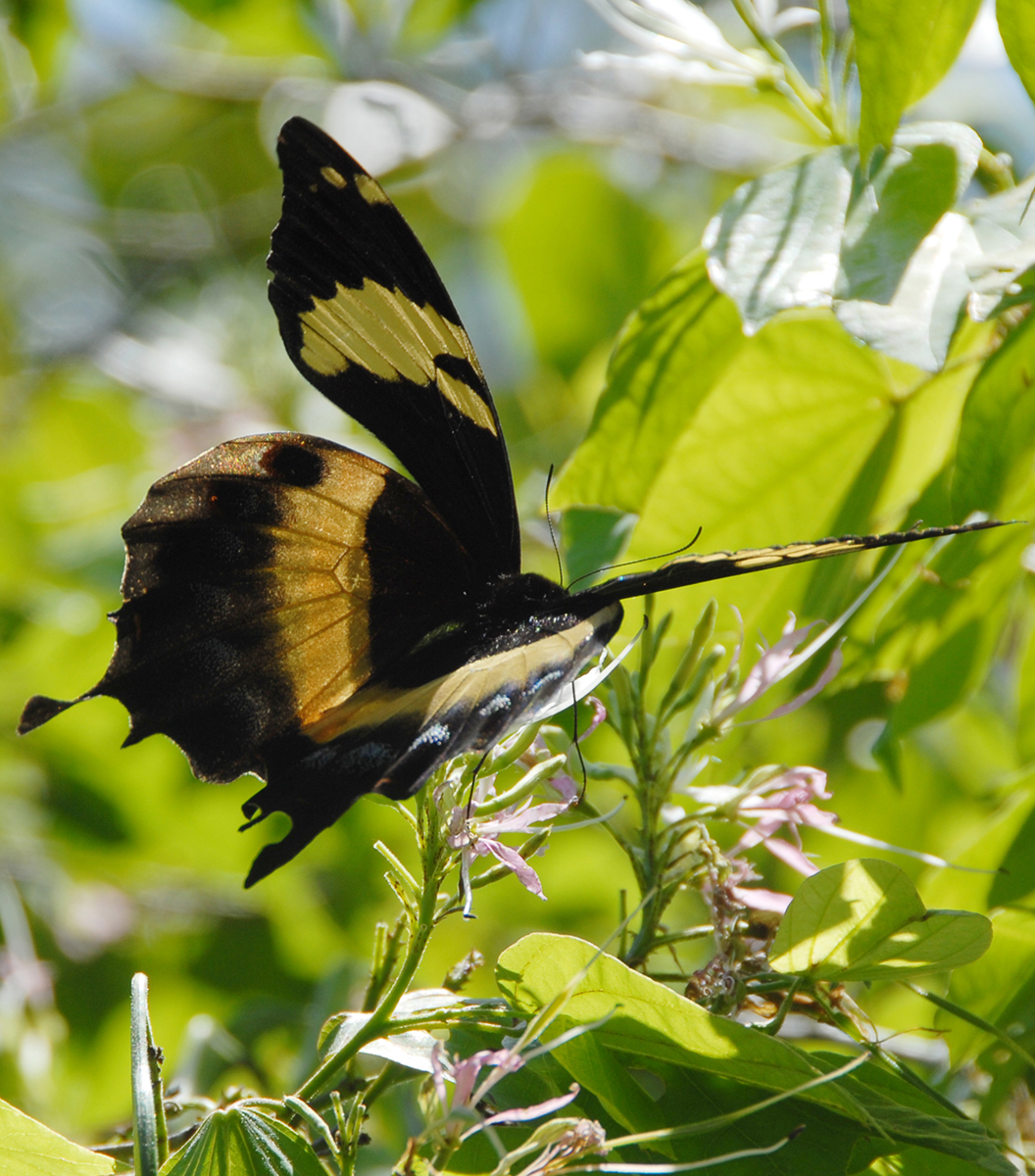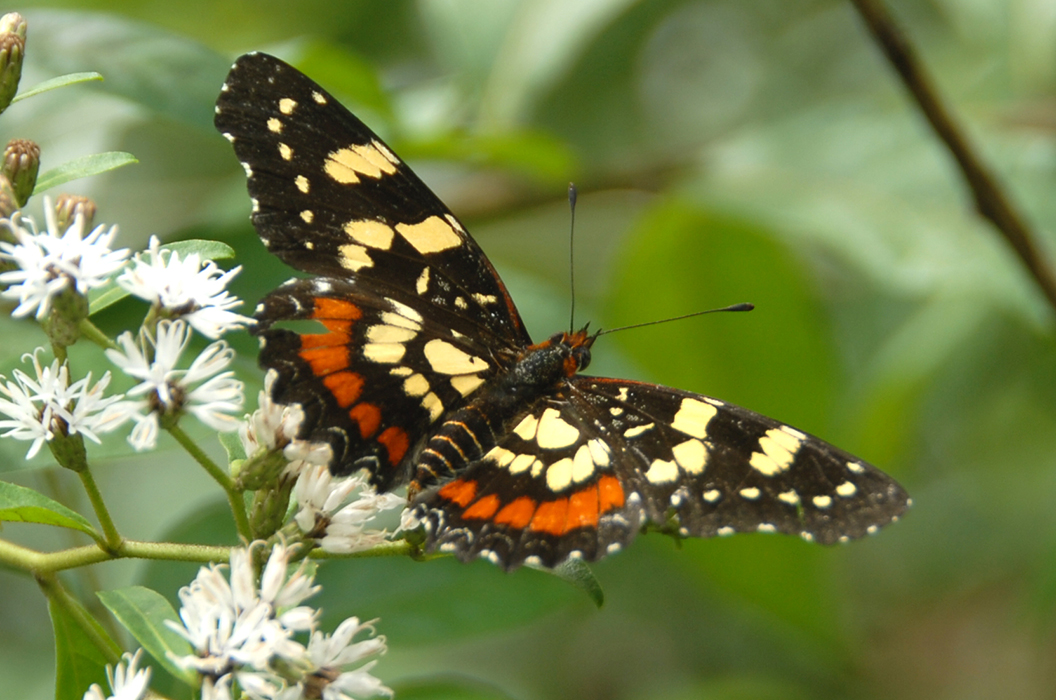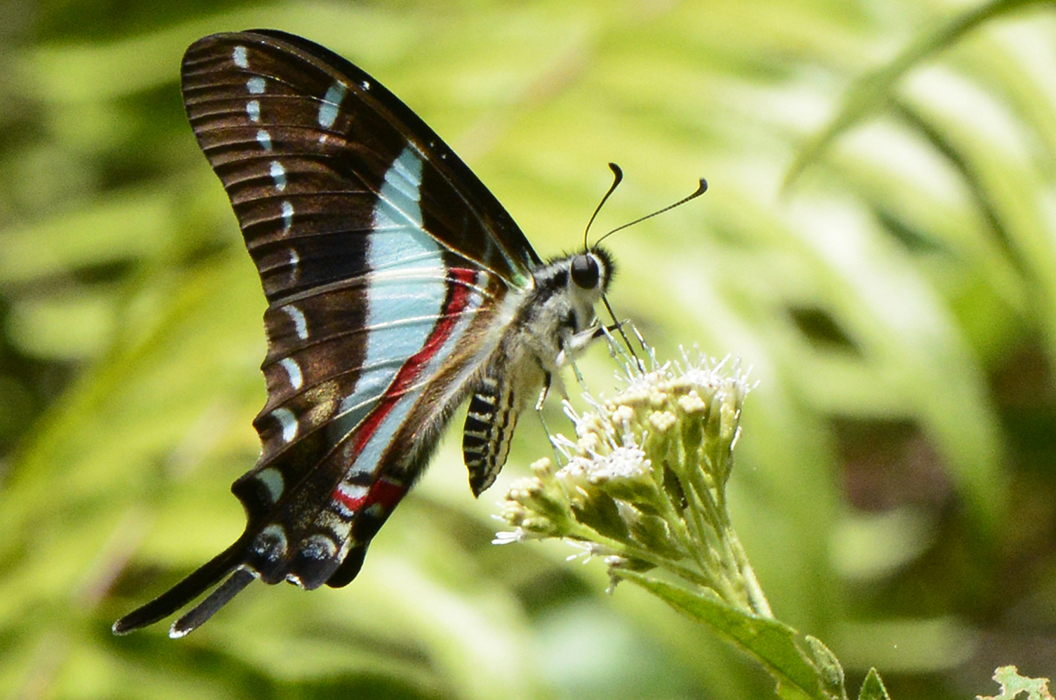Talking Butterflies with Vaughan Turland
Vaughan Turland is referred to as VT in this article
Meet Vaughan Turland
Vaughan Turland is a Research Associate at the Windsor Research Centre in Trelawny, Jamaica and a Fellow of the Royal Entomological Society of London.
He studies butterflies in Jamaica and even discovered a new genus and species of butterfly endemic to Jamaica. He is the co-author of the book Discovering Butterflies in Jamaica and their relationships around the Caribbean with Dr. Thomas Turner.
We spoke with VT to get some insight on butterflies in Jamaica and what it is like working with them. Continue reading to find out what he had to say.
How it all started
(How did you get started working in this field ? )
VT's passion for Natural History started from an early age. He loved being outside and has been told that from the age of three he was always bringing caterpillars, chrysalises, slugs and snails into the house. Everything held his fascination from lizards, birds, snakes to spiders. When he was older VT traveled a lot and loved seeing the flora and fauna of different countries.
“Butterflies have always held a special place for me; their delicate aesthetic qualities have a therapeutic effect and brighten up any day...If you have ever been fortunate enough to have seen hundreds of Blue Kite Swallowtails clustering to nectar on the bright pink flowering spires of Mountain Pride in the morning light of the Cockpit Country, it is just an unforgettable vision that stays with you forever”
When digital photography became of age, VT began photographing insects with a passion.
He explained in the interview that at that time, most of our knowledge about Jamaican butterflies came from museum specimens some of which were over 100 years old and faded. There were few photographs of Jamaican butterflies and none in Brown and Heineman's book, Jamaica and its Butterflies published in 1972. Most of Jamaica's fifty-eight endemic species and subspecies had never been photographed.
For VT that was an obvious and immediate challenge, especially to be the first to achieve this.
In search of butterflies
(What is it like studying butterflies ? )
Studying butterflies is an absorbing and exciting aspect of VT's life’s work.
“ As with so many subjects, the more we find out, the more questions arise”
In 2008, he wrote an article about the Green Skipper (Astraptes talus) a very rare hesperid that initiated correspondence with Dr. Thomas Turner, an entomologist studying Jamaican lepidoptera. This encounter was the start of something monumental, writing the book Discovering Jamaican Butterflies and their relationships around the Caribbean.
Initially, his main role was to find and photograph butterfly species some of which had not been recorded for more than seventy years. This task proved difficult as the locations of these butterflies were unknown, and no location to scout means no butterflies to photograph.
Before this, most of the life histories of Jamaican butterflies had never been photographed and many had not been documented or discovered. This took VT all across the island in search of butterflies.
Over the years that he and Turner worked together, the task continued to grow and in the end took nearly nine years to write with the help and support from scientists and museums around the world.
They made quite a dent in the list however, there are still many endemic species that we know nothing about other than seeing the adult specimen.
A butterfly among shrubs
(What are the greatest surprises and challenges you have faced while working in this field ? )
His greatest surprise was the discovery of a new endemic genus and species of butterfly. This he named Troyus turneri, Turner's Gold - striped Skipper in honour of his good friend and mentor Dr. Thomas Turner.
Turner’s Gold-striped Skipper/ Caribbean Wildlife Publications
He spotted the butterfly on a small shrub along a trail in the Cockpit Country near the community of Troy. He originally thought it was a moth but upon closer inspection of the antennae he realised it was a hesperid (Skipper).
Another great discovery was that of the female Jamaican Hermit (Grais juncta) a rare butterfly in the Cockpit Country with Dr. Turner. They were the first to ever find a female specimen. The male had been described in 1953 but the female had remained unknown for around sixty years.
Female Jamaican Hermit/ Caribbean Wildlife Publications
If all that wasn't amazing enough,
There's more.
It was drawing close to the publication date of their book and there were a few butterflies they still had no pictures for. Among this was the small brown Eufala Skipper (Lerodea eufala eufala).
The skipper had been reported near Williamsfield, Manchester in 1919 but Dr. Turner had never seen it after fifty years searching. A friend doing research on the plant regeneration after mining invited VT to visit Kirkvine Works, an alumina plant close to Williamsfield. There, nearly 100 years later in sparse shrub and grassland was the Eufala Skipper. The rest is history.
Other exciting observations were the sporadic sightings, many years apart of the fabulously strange Antillean Snout (Libytheana terena), Dingy Purple Wing (Eunica monima) and the West Indian Purple Wing (Eunica tatila tatilista) butterflies all at Spur Tree Hill in Manchester.
V is for Vulnerable
(In your opinion, which species populations are the most vulnerable?)
Due to the lack of data on many Jamaican butterflies and the rarity and sporadic nature of a few species it is hard to pin point the most vulnerable butterfly species.
In VT's opinion, however, the endemic Homerus Swallowtail, Panton's Fritillary and the Blue Swallowtail are at the top of the list, all with declining populations.
The Homerus Swallowtail is listed as an Endangered Species by the Convention on International Trade in Endangered species of Wild Fauna and Flora (CITES).
In the last eighty years, its primary forest habitat has been reduced by a staggering 50%.
Now, there are only two sub-populations of the swallowtail on the island. One in the Blue & John Crow Mountains and the other in the Cockpit Country.
Both, very vulnerable territories.
The habitat of the eastern sub-population has been significantly reduced due to land clearing and it would not surprise VT if the swallowtail population was destroyed in the next 20 years if this continues.
The Cockpit Country is presently being threatened while the debate continues about the boundary of the Protected Area with pressures to allow mining.
“It would be a great pity to lose this iconic national butterfly, the largest in the New World”
The big C, Conservation
(What are the conservation efforts towards vulnerable butterfly species?)
For VT, the key to conserving the Homerus Swallowtail for future generations is to ensure that present habitats are protected in terms of their composition and size.
A conference is scheduled for the end of October this year to discuss the issue and come up with a conservation plan that he hopes will be supported by the government, its agencies such as NEPA and the Forestry Department as well as the communities that border and interact with the habitat.
For Conservation we need CHANGE
(What would you like to see change in Jamaica regarding conservation of butterflies and other endemic wildlife and plants and how can the public help?)
“Like people, all flora and fauna depend on suitable habitat for their existence”
According to VT, we need to better understand what these habitat requirements are and then ensure that we protect them and not destroy them.
He believes conservation needs to be a pivotal part of our education system so that children understand that by protecting the homes of plants and animals, they are also protecting their own historical culture and heritage, vital water supplies and helping to minimise the undeniable effects of global warming.
The public can help by doing simple things like planting their garden to attract butterflies and birds which will not only provide enjoyment from seeing these creatures but will also help nature's cause.
The Next Generation
(What advice would you give to young people interested in a career in this field and nature photography ? )
“Protection of the environment and its resources will become increasingly important to the world as populations increase and pressures for land use and mining increase”
Without a doubt, VT thinks the demand for well-qualified scientists to argue both sides of the equation and find sustainable solutions for mankind will be paramount.
He believes that good entomologist will not only be conserving species but also looking at opportunities for insects as food sources and controlling insect pests and diseases.
In VT's own sphere of lepidoptera research including photography, he says there is no substitute for spending time in the field especially if you want to discover anything new and he believes there is plenty of opportunity to find new species of flora and fauna here in Jamaica.
For those interested in the photography, VT says nature photography demands great patience and a lot of planning to hopefully be in the right place at the right time. It is long hours in the sun surrounded by biting insects in the forest and requires the best camera and best lens you can afford.
However, he believes there has never been a better time to be qualified in one of these fields.
Visit www.jamaicanbutterfliesmoths.com to see a preview of Discovering Jamaican Butterflies and their relationships around the Caribbean and learn more about butterflies in Jamaica.





